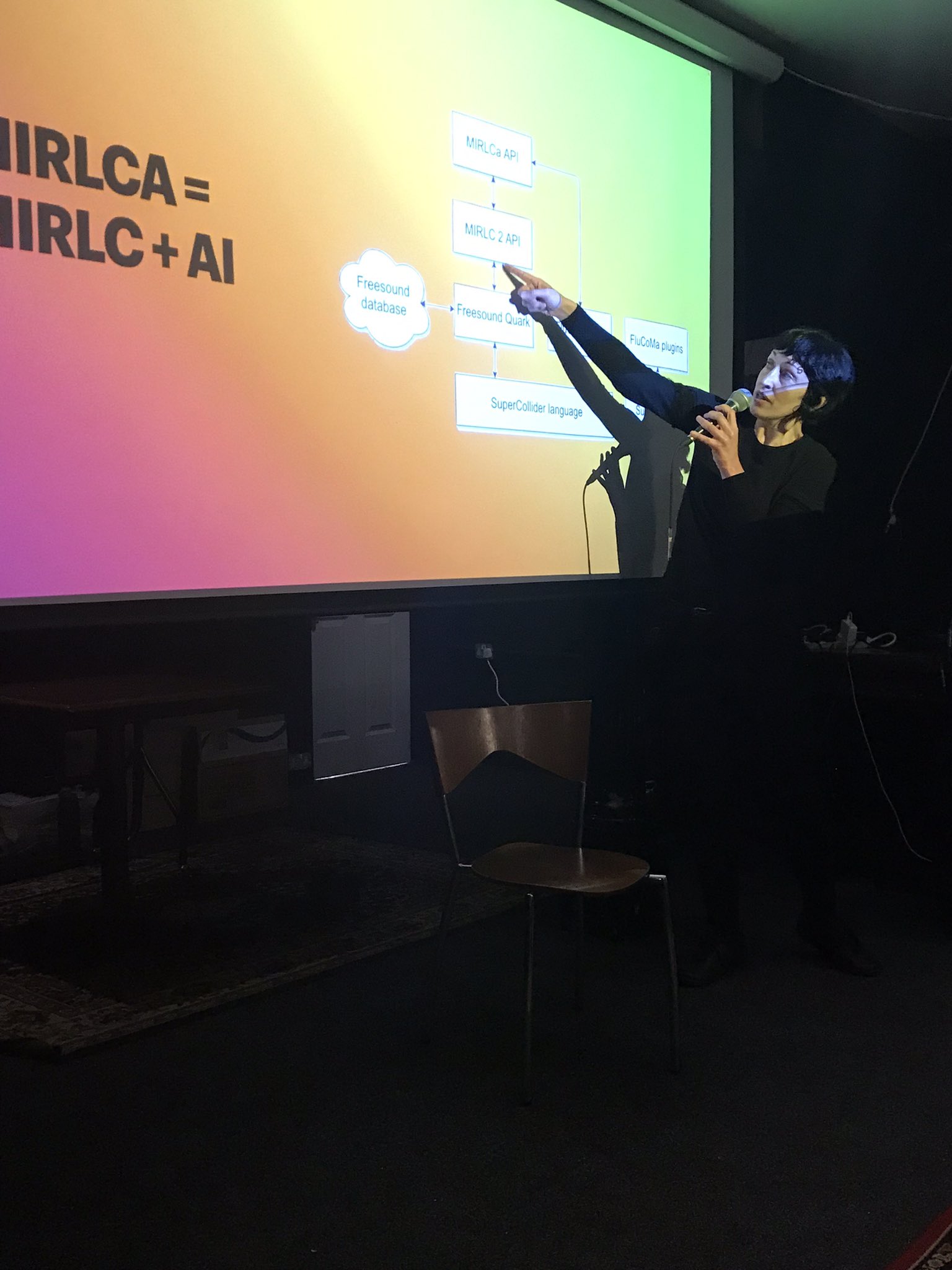Research Concert at the British Science Festival 2022

The first time I heard about the concept of a ‘research concert’ was when I was at the Norwegian University of Science and Technology (NTNU) in Trondheim, Norway in 2018. In Norwegian, it is referred to as a “forskningskonsert”. A research concert is a session where the performer(s) includes explanations about the technicalities and research involved in the musical instruments used in the performance. It is an open dialogue with the audience about what is behind the scenes.
Øyvind Brandtsegg and Tone Åse invited me to give a forskningskonsert at the fantastic venue Dokkhuset on November 24, 2018. It was a Saturday and the performance was at 14.00. This already was giving a cue that the type of concert was different. The title of the session was “A session on participatory mobile music and live coding using crowdsourced sounds”. I remember the experience as very unique. The concert was also incredibly well documented, producing the full-length video and a short version, the essence video. This also indicates the importance of communicating with the audience, not only during the performance but afterwards.
When preparing for the concert at the British Science Festival, it was unclear to me the kind of audience I should expect. The mystery was unveiled when meeting with Alan Barker, who offered a generous one-hour one-to-one session for advanced skills coaching. Alan Barker has been working with the British Science Association as a skills trainer for some years. Talking to Alan Barker was very useful and enlightening. Alan helped me understand the audience and design the session accordingly. When presenting the concept of a research concert to Alan, we agreed that a research concert would perfectly fit here. So that is what I decided to prepare.
The research concert when as planned. The session had 15-20 minutes of presenting the contextual work and technology used trying to keep the slides simple. This was followed by the 15-20 minutes performance with a live chat so that the audience could participate if they wanted to. The session concluded with 15-20 minutes of Q&A and discussion, in which the audience was invited to fill in a short online survey, and the results were shared and discussed with the group. My final impression was that there was a nice ongoing conversation with the audience using different interactive formats, including the musical.
Materials
Acknowledgments
I am thankful to the British Science Festival for the opportunity to present my work to their audiences in Leicester and a big thank you to the audience who attended the concert for their participation in the session. Thanks to James Andean for inviting me to be part of the MTI2 showcase at the British Science Festival. Many thanks to Chris Johnston for DMU media coverage. Thank you to Laura Hailstone and Becky Gilmore for coordinating the event and Theo and their team for their technical support on the day. Also thanks to Alan Barker for his mentoring role in understanding and communicating to the BSF audience. Last but not least, I’m grateful to Gerard Roma for his constant help and support.